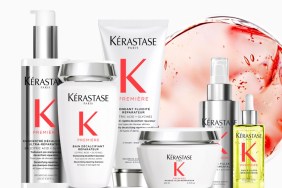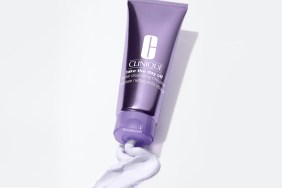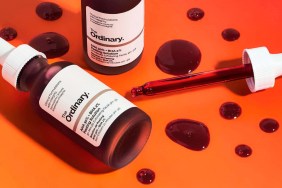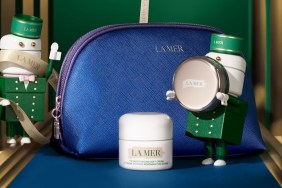I know what you’re thinking, if oil on my skin causes acne, blemishes and breakouts, aren’t I doing my pretty face a disservice by slathering it in facial oil? While conventional beauty wisdom of the past might have agreed with you, today’s dermatologists and aestheticians say otherwise. In fact, facial oil has the ability to help with redness, irritation and even breakouts. Read on to find out more about the beauty product you’re probably not using, but should seriously consider.
What is facial oil?
Facial oil can be made from a blend of natural botanical oils or be comprised of just one type, such as the all-popular argan oil. Some oils boast added vitamins and minerals for an extra nourishing punch to your dermis. You can find them in a variety of prices, from a variety of brands and companies like The Body Shop (Tea Tree Oil, $9.50) and Bobbi Brown (Extra Face Oil, $62). And if you’re on a budget, this is one beauty trick that has major DIY beauty potential. Pure virgin olive oil can be used on regular skin in place of a fancy brand name, as can pure coconut oil. The site Crunch Betty even has a three-ingredient facial oil recipe that mimics the oils available on store shelves. Different botanical blends are ideal for different skin types and purposes from anti-aging to acne. It’s important to read the labels and descriptions before you buy, especially if you have a specific skin problem you’re dealing with.
FAQs
While this list is by no means exhaustive, let’s go ahead and address the biggest concerns women have before they try these oils:
-
Will they clog my skin and will they leave a greasy finish? No and No. Certain types of oils are non-comedogenic. That means they won’t clog your skin. The types of oil used for facial treatments have a lightweight structure that actually makes them absorb into skin ultra fast, leaving it soft not greasy, according to Pevonia Botanicals Educator, Melissa Morris.
- What type should I use? We found an awesome chart (that doesn’t just promote certain brands), listing specific types of oil that should be used with specific skin concerns. Quick and easy to follow, you’ll find it here.
Benefits of facial oil
Okay, so these oils are a good thing for your skin. But how and why? Natural botanical oils impart nourishment that isn’t created in a lab, unlike so many moisturizers. In fact, many women take expert advice that facial oils are better for aging skin than moisturizers and use them exclusively instead of facial creams. They protect against free radicals, particles in the air that result in aging skin. Due to their fast absorption, they leave skin soft, supple and plump. Certain oils, such as argan, are anti-inflammatory, which means they help with redness and reduce irritation. They can even aid in creating better absorption of your anti-aging products, if you feel inclined to use both. It just takes applying the oil before your night cream. And while it’s not meant to take the place of sunscreen, it can add extra protection to your skin when worn underneath. Overall, it delivers repairing and preventative benefits in terms of aging and can address a variety of skin concerns—naturally. Oh, and they smell great, too.
When and how to use facial oil
Facial oil can be used underneath regular skincare and beauty products or on their own. They can be used in the morning, evening or both. The key is to make sure skin is clean and dry before you apply it. Focus on problem areas with the oil of your choice and gently use circular massaging motions to help the oil get down into your skin and get its work done. Definitely read the instructions of any oil you buy at the store, too.








